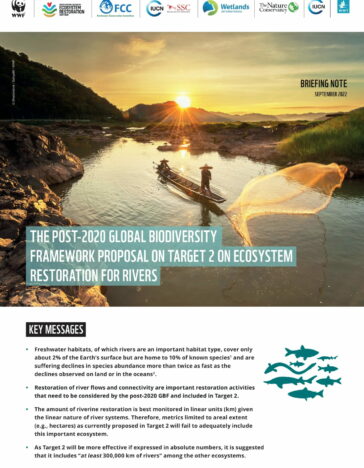
CBD Framework proposal on Target 2 Ecosystem Restoration for Rivers
-
Climate and disaster risks
To achieve the overall goal of reversing biodiversity loss, it is crucial to highlight the role played by free-flowing rivers in ensuring ecological connectivity for inland water species3. Although connectivity has featured in the Convention’s policy-making for over a decade and continues to play a key role across the post-2020 GBF (Goal A, Milestone A.1, Target 1, 2, and 3), the importance of restoring river connectivity and flows has not been highlighted enough in the latest draft versions of the framework.
Restoring rivers means restoring the unimpeded movement of species and the flow of natural processes that sustain life on earth. Removing barriers and other actions to restore flows and connectivity in rivers are important restoration activities that need to be considered by the GBF Target 2.
To avoid known issues with defining the current extent of ‘transformed’ or ‘converted’ areas, draft text for Target 2 is moving away from a percentage target and toward the expression of a restoration target in terms of a global area in (billions of hectares). While this is readily applicable for terrestrial ecosystems and certain types of inland waters or wetlands, an area-based approach is “poorly adapted” to river ecosystems.4 This briefing proposes to address this gap by proposing a global target and indicator to define and track river restoration under the post-2020 GBF.

